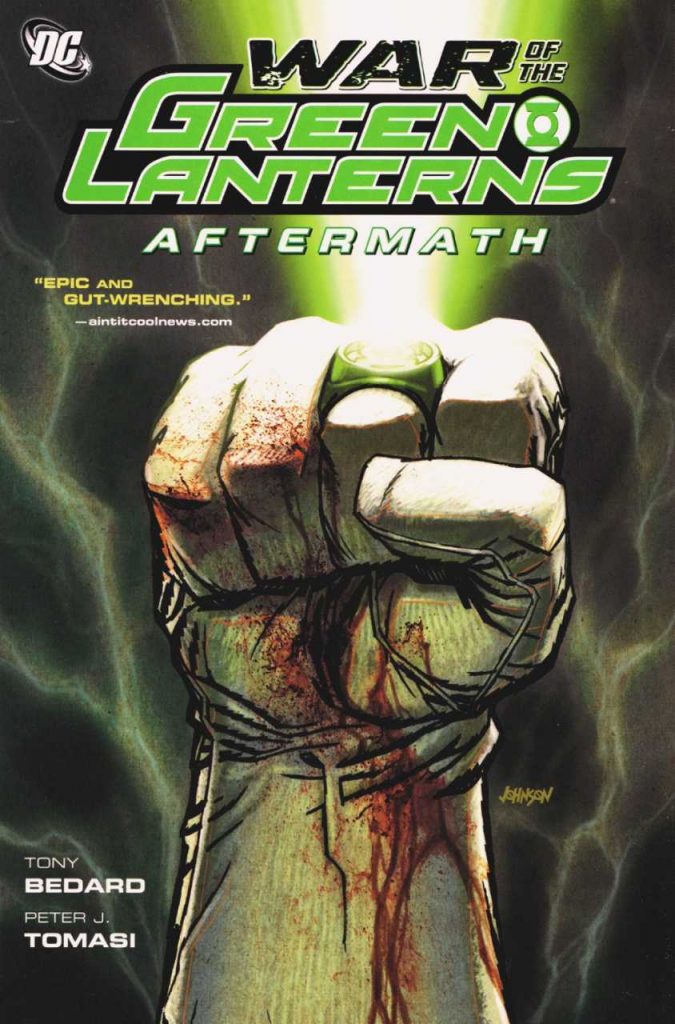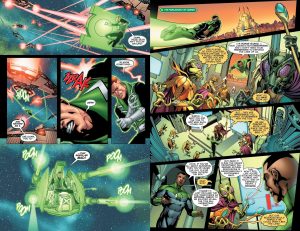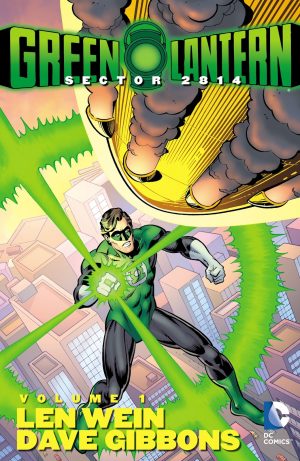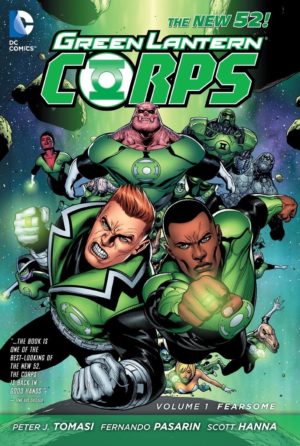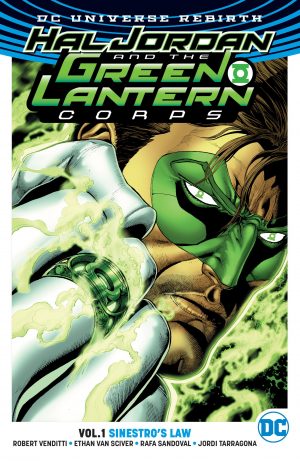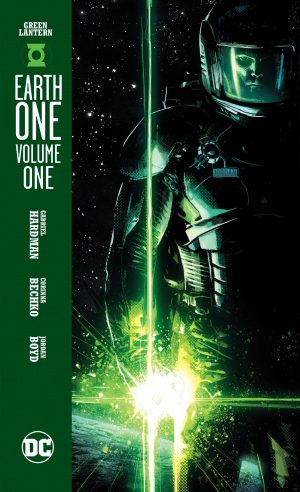Review by Ian Keogh
Aftermath is the staging post between the old and the new as DC rebooted all their titles under the ‘New 52’ logo, closing off their old universe. In practice, Green Lantern was one of the rare franchises where the reboot made no practical difference, but it did bring an end to the Emerald Warriors series, the final chapters of which feature here.
They’re just a mopping up exercise, only really connected to the remainder by virtue of Guy Gardner being a Green Lantern. He brings his attitude and aggression to Peter J. Tomasi’s opening two stories, one a mystery in space, the other a strange adventure, while he’s teamed with Batman to solve a space station murder in the third. The most distinctive art is from Bernard Chang (sample left) whose aliens and layouts hit the spot.
The two key elements of Green Lantern: War of the Green Lanterns were Hal Jordan being evicted from the Green Lantern Corps and Sinestro being back in their good graces. As ever, despite being confronted with their mistakes, the Guardians of the Universe remain arrogant and aloof, and in Tony Bedard’s title story he keeps them away from centre stage for the most part as various groups of Green Lanterns form allegiances with separate agendas. It comes across as filler, and the need for four separate artists reinforces that feeling.
Artistic consistency is a problem throughout, with only Daniel HDR (sample right) managing two consecutive chapters, his clear action style illustrating this collection’s best. Bedard turns the spotlight on John Stewart, now a divisive figure among the Green Lanterns, and a new recruit selected under dubious circumstances. A police officer on her home planet, she’d prefer to remain a Green Lantern, and perhaps John can help with that. A second Bedard/HDR collaboration resolves Kyle Rayner’s complex relationship with Sora. Anyone who’s been following that subplot will surely only see it going one way, and that’s what happens. This incarnation of the Green Lantern Corps closes with Scott Kolins drawing a quarter of his story about small conflicts within the Corps and three others with very different styles on the remainder.
War of the Green Lanterns didn’t quite work as the epic it was intended as, but is still held in high regard, while almost all this content pales in comparison, lacking much ambition. A few nice character moments don’t compensate, so don’t mistake this in any way for a necessary tie-in.
